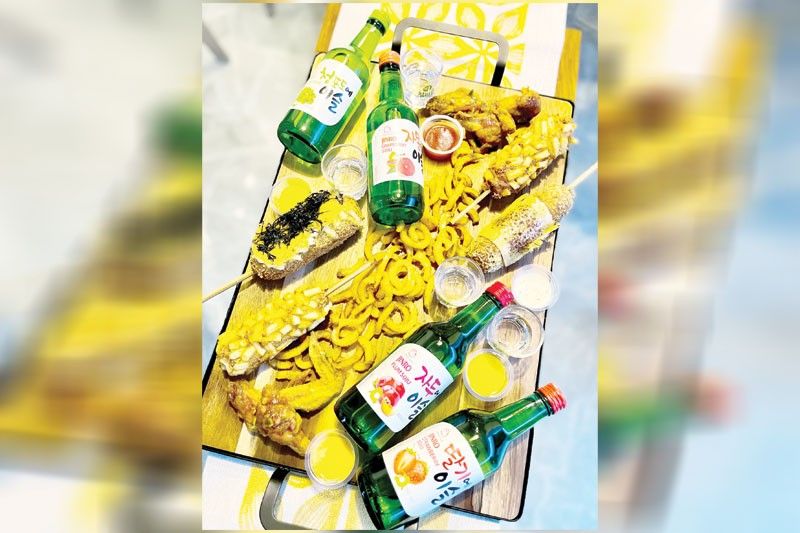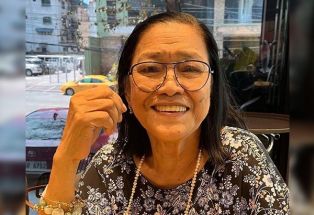Soju gets a starring role in the Korean wave

MANILA, Philippines — Many Filipino fans discovered South Korea’s “beloved national drink” soju through K-dramas, a driving force of the Hallyu or Korean wave. But the soju’s cultural and historical significance extends beyond its role as a reliable trope in these shows.
The Philippine STAR recently joined a group of Filipino press outlets covering Hallyu to have a closer look at the fascinating process of how JINRO — the nearly century-old maker of South Korea’s flagship soju — crafts the “world’s most sold spirit,” as recognized by Drinks International’s Millionaires’ Club.
In Icheon, some 50-km away from Seoul, where the country’s leading beverage company HITEJINRO factory was located, the soju brand’s frog mascot could be seen side by side with celebrity ambassador standees. Inside, a theater provided a video introduction, highlighting the brand's place in Korea’s drinking culture, as well as the rich heritage and tradition that go into every bottle.
Some interesting facts we learned so far: The colorless distilled spirit was first made in Korea by distilling alcohol from grains during the 13th century. In the 1920s, that changed with the adoption of technology. Soju is now made using distilled barley, sweet potato, tapioca, sugar cane mixed with water and additives.
JINRO soju, with a history dating almost a century, was born in 1924 with the establishment of the Jincheon Liquor Company. The name “JINRO” combines “Jin,” which means “real” and part of the production site’s name, with “Ro,” meaning dew that forms during distillation. Within five decades, JINRO soju became Korea’s top-selling soju, recognized by its iconic green bottle.
Proceeding to the company’s mini-museum, we learned about the product’s evolution. Initially, the soju was in bronze bottles with a monkey design symbolizing fortune in the northwestern provinces. In 1954, HITEJINRO relocated to Seoul and changed the design to a toad, signifying prosperity and longevity, as the bottle transitioned from bronze to sky blue-tinted in the ‘50s to the 2000s.
The bottle became green with the launch of JINRO’s classic soju, Chamisul, at the turn of the millennium. It proved to be a “blockbuster,” selling a record 20 billion bottles in 14 years.
But apart from appearance, JINRO soju also evolved in alcohol content and consumer base. Initially, the soju had a high 25-percent alcohol by volume (ABV) and was marketed towards men. Over time, the ABV was lowered to appeal to a broader audience. The brand’s efforts to shed its male-oriented hard liquor image was evident through the use of female celebrity endorsers starting in 1998.
At first, selecting an actress as the brand’s ambassador faced resistance, but it turned out to be a successful business decision. Chamisul sales increased when female celebs like Lee Young Ae (Jewel in the Palace), Kim Tae Hee (Iris, Hi Bye Mama!), Ha Ji Won (Hwang Jini, Empress Ki) and the current endorser, IU, were brought on board. IU, who enjoys a wide fanbase being both K-pop and K-drama superstar, has been an endorser for several consecutive years now.
The company introduced a range of fruit-flavored sojus over the years – grapefruit, green grape, plum, and strawberry – all with a reduced 13-percent ABV. These flavors gained popularity, especially among overseas millennials and Gen Zers, contributing big to soju exports. HITEJINRO also partnered with industry peers to create limited-edition flavor sojus, like lemon candy-flavored soju with Orion and melon ice cream-flavored soju with Binggrae.

In the Philippines, the statistics reveal Filipinos love soju. According to Hwang Jung Ho, managing director of HITEJINRO Overseas Business, based on Euromonitor, Filipinos consumed an estimated 7,545,000 liters of soju, equivalent to 21 million bottles.
The company even expects a 40-percent revenue growth in the country this year compared to 2018, when its Philippine subsidiary was set up.
“Given the current global trend of soju spreading hand in hand with the Hallyu wave through OTT media, we believe that it’s the right time to directly enter the Philippines, a country with the highest per capita SNS usage time worldwide,” the executive explained the move to bring JINRO to the country through a subsidiary and no longer through local distributors.
Aside from low alcohol content and diverse flavors appealing to young women and even “those who have reservations about alcoholic beverages,” Hwang believes soju’s cultural connection is what attracts Filipino consumers.
“In the midst of the global Hallyu wave, soju is readily recognizable and accessible. I believe that the charm of soju lies not only in its taste but also in the fact that it allows consumers to embrace Korean culture while enjoying it.”
The executive recognized how the Hallyu, fronted by K-pop and K-drama, turned soju into a star not only in the Philippines but also on the global stage.
“Soju holds a significant place in Korean culture. As Korean culture and the entertainment industry gained worldwide recognition through the Hallyu wave, soju, closely related to the lifestyle of Koreans, naturally drew the curiosity of many consumers as it appeared in content,” said Hwang.

“When characters in content are seen enjoying soju, it often prompts viewers to seek out soju, making them feel a connection to Korean culture when they drink it. This, I believe, has contributed to the popularity of soju.”
JINRO has visibly harnessed the Hallyu power by tapping celeb ambassadors, which also aligns with changing market trends and the brand’s evolving characteristics.
On the selection of endorsers, Hwang said, “As a leading South Korean alcoholic beverage company, we utilize contemporary top models, particularly those who align with the brand’s characteristics, to represent our brand.
“When soju was first introduced in 1924, it was a very strong spirit with 25 percent alcohol content, and it was sold in transparent glass bottles, creating an image as a man’s drink. However, with changing market trends, its alcohol content gradually decreased to 19.8 percent, the bottle design transformed into green, and an eco-friendly and nature-oriented image began to be emphasized.
“As a result, there was a growing tendency to select female models who could convey the image of nature-friendliness as part of our adjusted marketing strategy. Additionally, as we expanded into international markets, we also established criteria for selecting models that resonated with overseas consumers on this nature-oriented image.”
Our visit came at the perfect time as the company is gearing up to celebrate its 100th anniversary next year. Regarding overseas celebrations for this milestone, Hwang acknowledged the challenging global economic conditions due to COVID-19’s aftermath. However, they are set to strengthen their position as the top brand through increased brand awareness activities, adapted to each country’s situation. They also plan to expand consumer engagement with new product launches and promotions as part of their 100th-anniversary celebrations.
Furthermore, he believes that despite the emergence of “imitation” products trying to “follow JINRO’s lead externally,” they “cannot replicate” the quality that the company has built over its 100-year history.
He, nevertheless, agreed that distinguishing soju products can be challenging for consumers. But he also noted that JINRO sets itself apart by using rice, barley, tapioca, natural additives, and subjecting the soju to four rounds of filtration with bamboo charcoal, making the quality difference evident.
“A helpful tip when choosing JINRO products is to look for the frog mascot on the soju bottle label, which should make it easy to quickly distinguish JINRO from other brands,” Hwang added.
Our tour took us through the production area, where photos however were not allowed. It then led us to the vast shipping warehouse where products were prepared for distribution.
The visit wrapped up with some taste tests of fruit-flavored soju and cultural insights. We discovered that age hierarchy is essential in how soju is served. The youngest person or “maknae” at the table is responsible for pouring for everyone, and the traditional way is to accept it with both hands as a sign of respect. To prevent bad luck, someone must pour for that youngest person at the table. After saying “cheers,” avoid eye contact or look away while taking a sip.
We got to relive this experience more authentically in the vibrant alleys of Jongno-gu, Seoul. A soju bomb (a soju-beer concoction) was served during dinner in the midst of the post-work crowd and dating couples at Korea’s makeshift roadside “restos” known as pojangmacha, a famous setting of many K-dramas’ emotionally charged scenes. Without the melodramatic love or heartbreak confessions, and with a nod to responsible drinking, we felt like living out our K-drama dreams. It was a nice reminder of the extent of Hallyu’s influence on our lives.
- Latest
- Trending
































